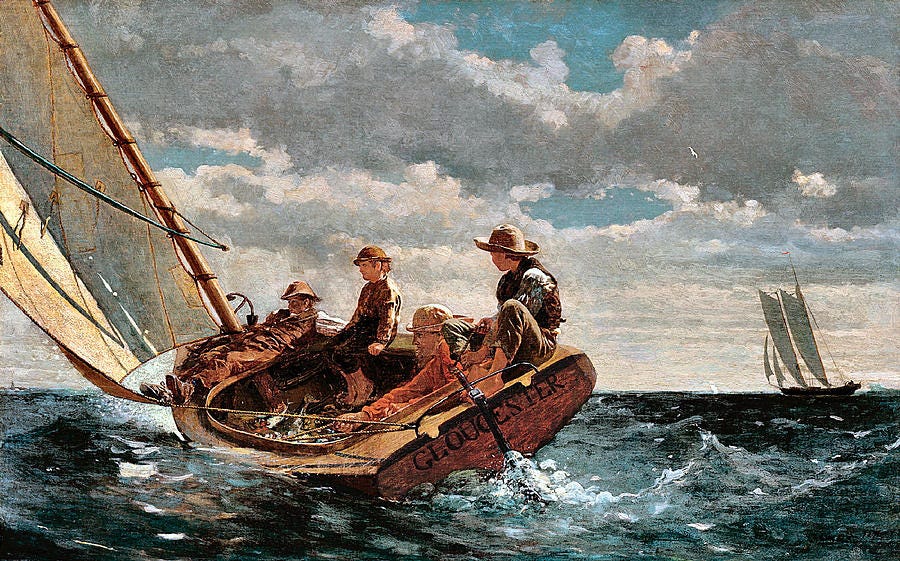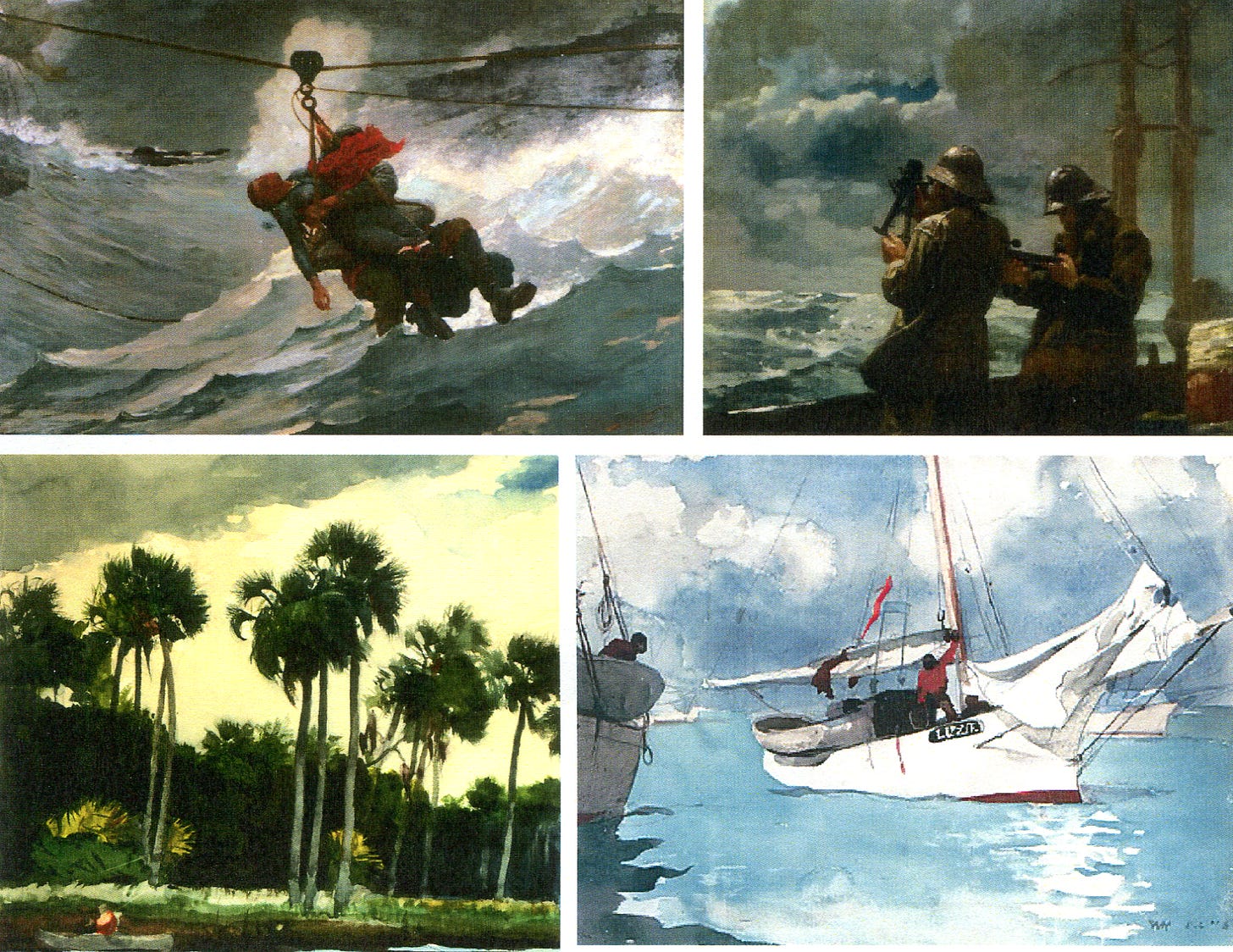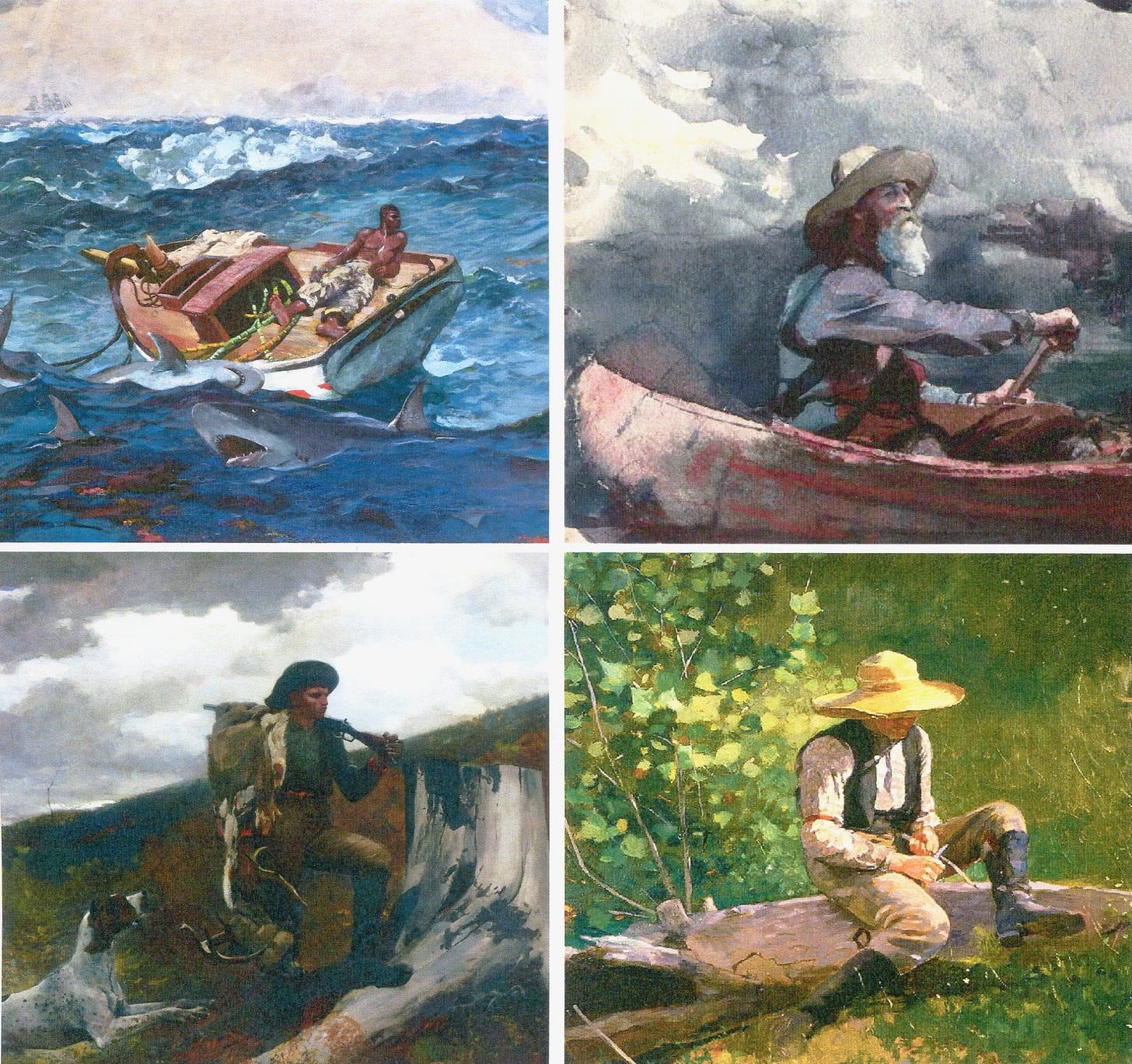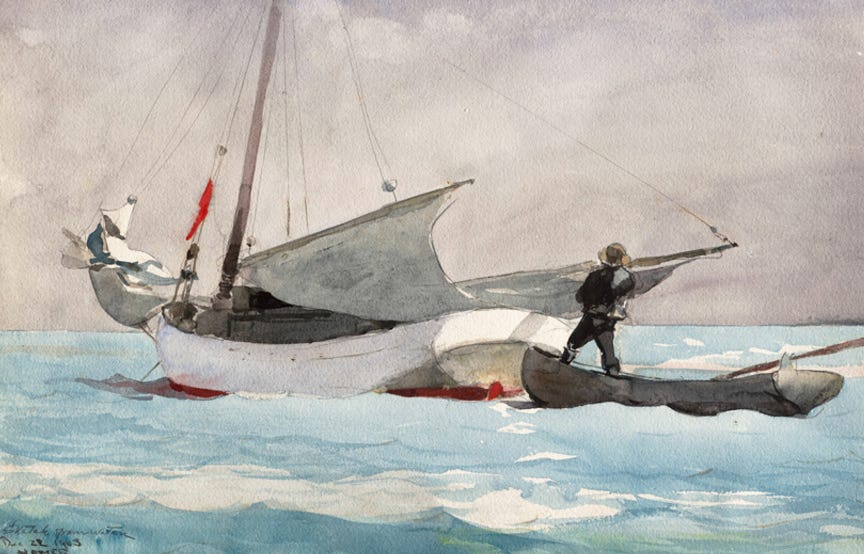A Uniquely American Artist
Winslow Homer documented the sea, the land and the life of 19th Century America

Have you ever looked at a scene in nature and wished you could reproduce it as you experienced it? Not as a camera might see it but in a way more vivid and more meaningful, in the same sort of way that a great artist might see it; capturing all the subtle colors and shapes and feelings that a camera would miss?
Winslow Homer saw more than a camera could see and applied it to his oil paintings and watercolors. He saw past physical form in a way which captured the human experience of his subjects … of moonlight on the water, of fresh-cut hay, of a howling gale, of being alone.

Homer was born in Boston and raised in a New England culture of upper middle class leisure. His mother, who was an accomplished watercolorist, taught him the elements of painting at an early age. In 1863, he was commissioned by Harpers Weekly to go to Virginia as an artist correspondent and paint scenes of the ongoing Civil War. In 1866, a year after the war ended, he painted an actual scene from that conflict titled “Prisoners from the Front”, in which his personal friend, General Francis Barlow, confronts three Confederates he captured at the Battle of Petersburg, VA, April 2, 1865.

Much of Homers best work reflects his fascination with the sea and its restless energy and beauty. He captured its varied moods from the cold swells of heavy seas along the New England coast to the placid, aquamarine water in the Bahamas and Florida, including the Keys.

Homer prefered his own company and found the greatest comfort in solitude. He never married and, although he was not unsociable, he liked living alone. Many of his watercolors depict the lone individual in a remote setting and probably was the thing with which he most identified.

Although his personal life was not marked by epic events, his works can captivate the imagination in epic ways. You come back to them often and you are drawn into a world of human events that took place in the natural world a century and a half ago. You feel the gathering storm before a stormy night or smell the salt air of a sunlit Bahamian bay

Homer’s life was revealed much more on paper and canvas that in events. We would properly consider him reclusive and to that give credit for the images he brought to life at the tip of his brush. One of the young men he personally influenced was the great American illustrtator, N.C. Wyeth who also influenced his son, Andrew Wyeth.
Winslow Homer didn’t leave behind a volume of witty or wise quotations but here's one he did that bears mention:
“Look at Nature, work independently and solve your own problems.”
Below the paywall is your recipe for this edition. It came to mind while writing this episode and thinking of the crab fishermen hauling in their crab pots around the coast of Maine, scenes so familiar to Homer.
Keep reading with a 7-day free trial
Subscribe to Eat Your History to keep reading this post and get 7 days of free access to the full post archives.




